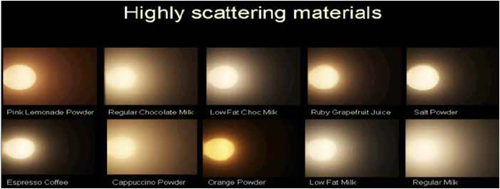Cornea, Corneal Therapeutics
Corneal Mapping Can Help Improve IQ

Corneal topography and tomography can help assess patients’ IQ and guide treatments that can improve it, reported Marcony R Santhiago MD, PhD. While most important in the central cornea, the periphery matters as well, he noted.
Asymmetric astigmatism degrades IQ and is the hallmark of ectatic corneal disease, Dr Santhiago said. It appears as focal changes in keratometry or elevations, irregular curvature patterns, and focal asymmetric corneal thinning. As ectasias worsen, the asymmetry becomes more evident, and IQ worsens. Topography and tomography can also detect induced higherorder aberrations, buttonhole flaps, and asymmetry between the eyes that affect IQ.
Therapeutic refractive surgery can greatly improve poor IQ due to corneal issues. Procedures include topography-guided ablations and phototherapeutic keratectomy for corneal irregularities and opacities. It can help patients with decentration and small optical zones and increase visual acuity in post-LASIK ectasia. “The results are fantastic in terms of increasing IQ and reducing, for example, night vision symptoms.”
Topography-guided procedures are preferable to wavefrontguided because topography is more reliable for mapping highly aberrated or irregular corneas. And the ablation pattern combines hyperopic and myopic approaches to smooth adjacent areas, conserving tissue where it matters most, Dr Santhiago said.
For highly irregular corneas, he suggests a two-step treatment, with the first aiming to regularize the cornea only, adding any refractive change as a separate step perhaps six months later.
Corneal topography can help in choosing lenses as well. It can identify patients who may have previous refractive surgery or irregular corneas requiring a special lens power formula to select a conventional or toric lens. Higher-order aberrations, particularly in the central cornea, may suggest the patient is not a good candidate for multifocal lenses. Corneal spherical aberrations, particularly negative aberrations, may indicate a spheric rather than an aspheric IOL.
EPITHELIAL MAPPING
The epithelium can help assess image IQ, said Julie M Schallhorn MD. Because it tends to regress toward a regular shape, it can be thicker or thinner at different points across the cornea, masking corneal irregularities. “The epithelium is not static; it is moving around, filling in the nooks and crannies.”
The epithelium thickens in the central cornea after myopic LASIK and in a donut pattern more peripherally after hyperopic LASIK. “The epithelium tries to undo everything you have done with the laser.” It also may fill in the flatter parts of the cornea around the keratoconus cone and thin over the steeper area, masking the true extent of the cone, Dr Schallhorn added.
Because epithelial remodelling is highly variable, Dr Schallhorn recommended epithelial mapping for patients before LASIK or PRK treatment or retreatment—and those with irregular corneas— to assess its potential impact on IQ. “Respect the epithelium. It has a huge impact on image quality.”
WAVEFRONT ANALYSIS
Wavefront and objective scatter index analysis can help distinguish between IQ effects of higher-order aberrations (HOAs) and light scatter, which can help guide treatment, said Karolinne M Rocha MD, PhD. Essentially, HOAs create blur, shape distortions, and halos, while light scatter mostly reduces contrast and increases glare, she said.
Different sources of light scatter, such as cataracts, posterior capsule opacification, and corneal flap interface haze, require specific treatment. Options for correcting HOAs include refractive surgery, corrective lenses, or IOLs that induce spherical aberration (SA), which can also extend depth of focus, but their suitability depends on the SA induced by the cornea. Visual simulators help gauge patients’ response to and tolerance of HOA induction and correction, Dr Rocha said. Drs Santhiago, Schallhorn, and Rocha spoke at Refractive Surgery Day during the American Society of Cataract and Refractive Surgery 2022 Annual Meeting in Washington, DC, US.
Marcony R Santhiago MD, PhD. marconysanthiago@hotmail.com
Julie M Schallhorn MD. julie.schallhorn@ucsf.edu
Karolinne Maia Rocha MD, PhD.rochak@musc.edu

Latest Articles
Towards a Unified IOL Classification
The new IOL functional classification needs a strong and unified effort from surgeons, societies, and industry.
The 5 Ws of Post-Presbyopic IOL Enhancement
Fine-tuning refractive outcomes to meet patient expectations.
AI Shows Promise for Meibography Grading
Study demonstrates accuracy in detecting abnormalities and subtle changes in meibomian glands.
Are There Differences Between Male and Female Eyes?
TOGA Session panel underlined the need for more studies on gender differences.
Simulating Laser Vision Correction Outcomes
Individualised planning models could reduce ectasia risk and improve outcomes.
Need to Know: Aberrations, Aberrometry, and Aberropia
Understanding the nomenclature and techniques.
When Is It Time to Remove a Phakic IOL?
Close monitoring of endothelial cell loss in phakic IOL patients and timely explantation may avoid surgical complications.
Delivering Uncompromising Cataract Care
Expert panel considers tips and tricks for cataracts and compromised corneas.
Organising for Success
Professional and personal goals drive practice ownership and operational choices.